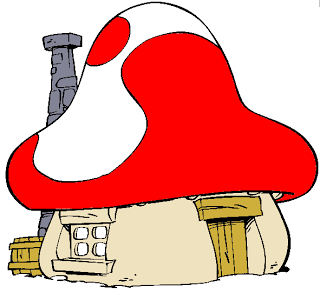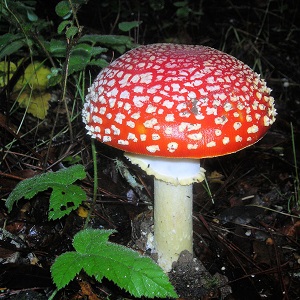 Working in climate change you hear a lot of myths surrounding the science; it’s a scientific conspiracy, the models are faulty, scientists are in disagreement, there is too much controversy. This last point is particularly annoying, because it has been long established that this is simply not true. But it’s also irritating, because it ignores some of the more interesting scientific questions regarding climate change. Let’s face it, it’s just not exciting to ask the question of whether climate change is happening or caused by people….that has major snooze-factor in my book. The really cool and interesting scientific questions regarding climate change now have super nerd factor, they are for real dork-culture…they are about mushrooms.
Working in climate change you hear a lot of myths surrounding the science; it’s a scientific conspiracy, the models are faulty, scientists are in disagreement, there is too much controversy. This last point is particularly annoying, because it has been long established that this is simply not true. But it’s also irritating, because it ignores some of the more interesting scientific questions regarding climate change. Let’s face it, it’s just not exciting to ask the question of whether climate change is happening or caused by people….that has major snooze-factor in my book. The really cool and interesting scientific questions regarding climate change now have super nerd factor, they are for real dork-culture…they are about mushrooms.
You’ve heard me blog about mushrooms quite a bit in the past. No, it’s not because I’m a stoner living in the east bay, though that is a good guess. It’s actually because they are really interesting, often elusive and incredibly important to ecosystems – not just because some people like to eat them, but because they are big decomposers in many natural systems, freeing up nutrients to plants we like to eat and shade ourselves with, and breaking down trees and animals we don’t want to deal with. They also push forward the carbon cycle by breaking down nutrients in the soil and decomposing woody debris…but that is just basic high school science there.
From reading my blog, you’ve learned that there is some controversy in the fancy world of truffles as to whether climate change has increased their prevalence or if we are just more aware of them now (because, like wow, foodies are crazy!) You also learned more recently that climate change has increased the allergenicity of one type of fungus which makes us sneezy and can actually kill people who are immunocompromised. But, it turns out the mushroom controversy continues as people take a closer look at these funky decomposers….
So you probably already know that the majority of mushrooms spend most of their lives underground or in downed logs or dead trees and sometimes in rotting corpses…am I grossing you out yet? The parts that we are most familiar with are the fruiting bodies, which are the things most people call mushrooms, they are the part that pops out of the ground; the place that Smurfs call home.

Mushrooms are a particularly interesting organism to look at because they are really weird; they’re not plants, they’re not animals, and since they grow mostly underground they are rather elusive. Also people find them gross…so you know, not something everyone is running out to study. But some people are fans, and others are super nerds and just categorize and count everything, and that is fortunate because some of those datasets from super-nerds can be used now by uber-nerds to figure out if climate change is impacting mushrooms.
It is actually one of these data sets I’m going to be talking about today: one from Switzerland where it turns out that since the mid-1970’s there has been a massive increase in those fruiting bodies I was talking about, and a higher species richness (that means the number of different species in a given area). In addition, the fruiting has come later in the season since the 70’s. And who is to blame? It seems that climate is in control of this one. Are you surprised?
It actually gets more complex than that, because among fungi there are different functional groups: mycorrhizal (symbiotic fungi that live in the roots of plants and trade mineral nutrients and water in exchange for sugar) and saprotrophic (those are the rotters you see on dead trees). Given that these two types of fungi have differing lifestyles, would it surprise you to hear that different aspects of climate impact their livelihoods?
The saprotrophs (decomposers) are more dependent on temperature and moisture levels to control their decomposition processes, which is how they get their nutrients. Meanwhile the mycorrhizals (plant-lovers) are more dependent on their host plants for sugars, so it seems that anything climatic that impacts the host, will impact the ‘lover.
What does access to sugar have to do with fruiting bodies? Well, have you ever tried to have a baby without eating for 9 months? Try it and then let me know what you think about the importance of access to nutrients for reproduction….
So what does this have to do with climate change? Well lots more than what I can put in a simple 900 word blog, but here are a couple questions that you should be asking…As climate changes, how will it influence mushroom abundance and reproduction? Will more fruiting bodies lead to more fungi overall in the landscape? Will more fungi lead to a faster decomposition of carbon trapped in debris on the forest floor and in the soil? If that carbon is broken down faster will that result in more carbon dioxide entering the atmosphere than previously predicted? Will this greater amount of carbon dioxide add to the enhanced greenhouse effect, warming the planet further? Will an even warmer planet lead to a better environment for fungi thereby causing more fungi breaking down carbon faster? Is this something we call a positive feedback loop? Did you just learn science from a 900 word blog?
It turns out that there are many more research questions to ask, just about mushrooms alone, which makes them one of the coolest and interesting organisms to study right now in relation to climate change. And you thought you were slacking off from work by reading a blog about ‘shrooms. Sucker.
Further Reading
Unraveling environmental drivers of a recent increase in Swiss fungi fruiting
I just learned science from a 900 word blog!